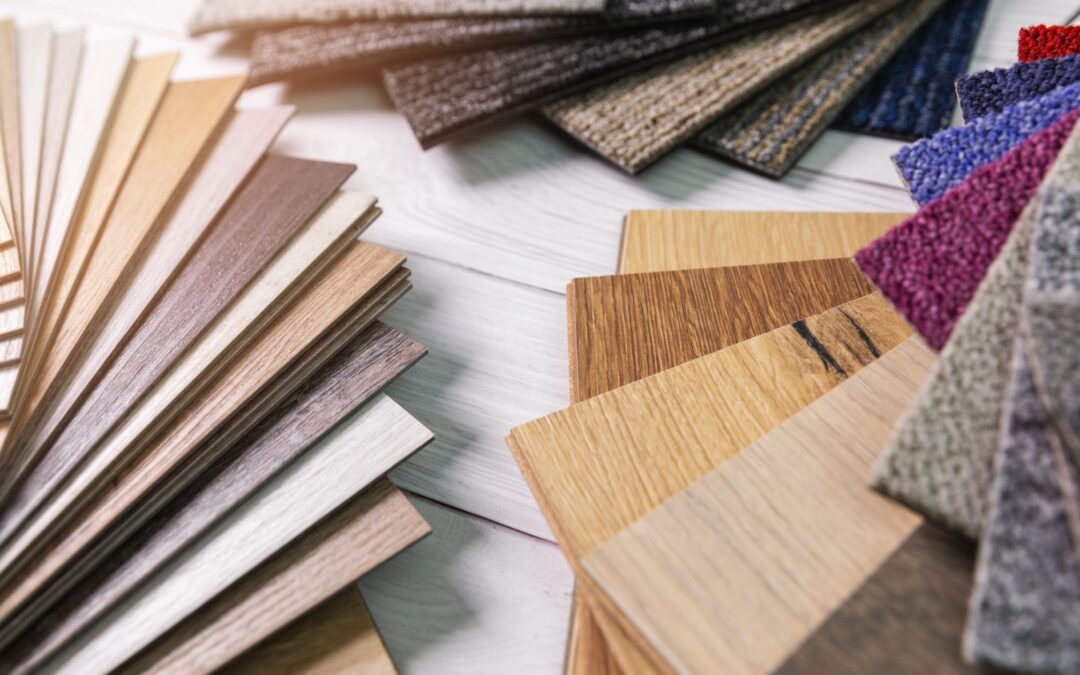Choosing new flooring transforms any home, but the decision between laminate vs vinyl flooring often leaves homeowners confused. Both options offer durability and style at reasonable prices, yet they differ in construction, performance, and ideal applications. Understanding these distinctions helps homeowners select the right material for their specific needs and budget.
Modern flooring technology has advanced both laminate and vinyl products beyond their early limitations. Today’s options mimic natural wood, stone, and tile with remarkable accuracy. However, their underlying composition and performance characteristics create distinct advantages depending on room conditions, foot traffic, and long-term goals.
Understanding Laminate vs Vinyl Flooring Construction
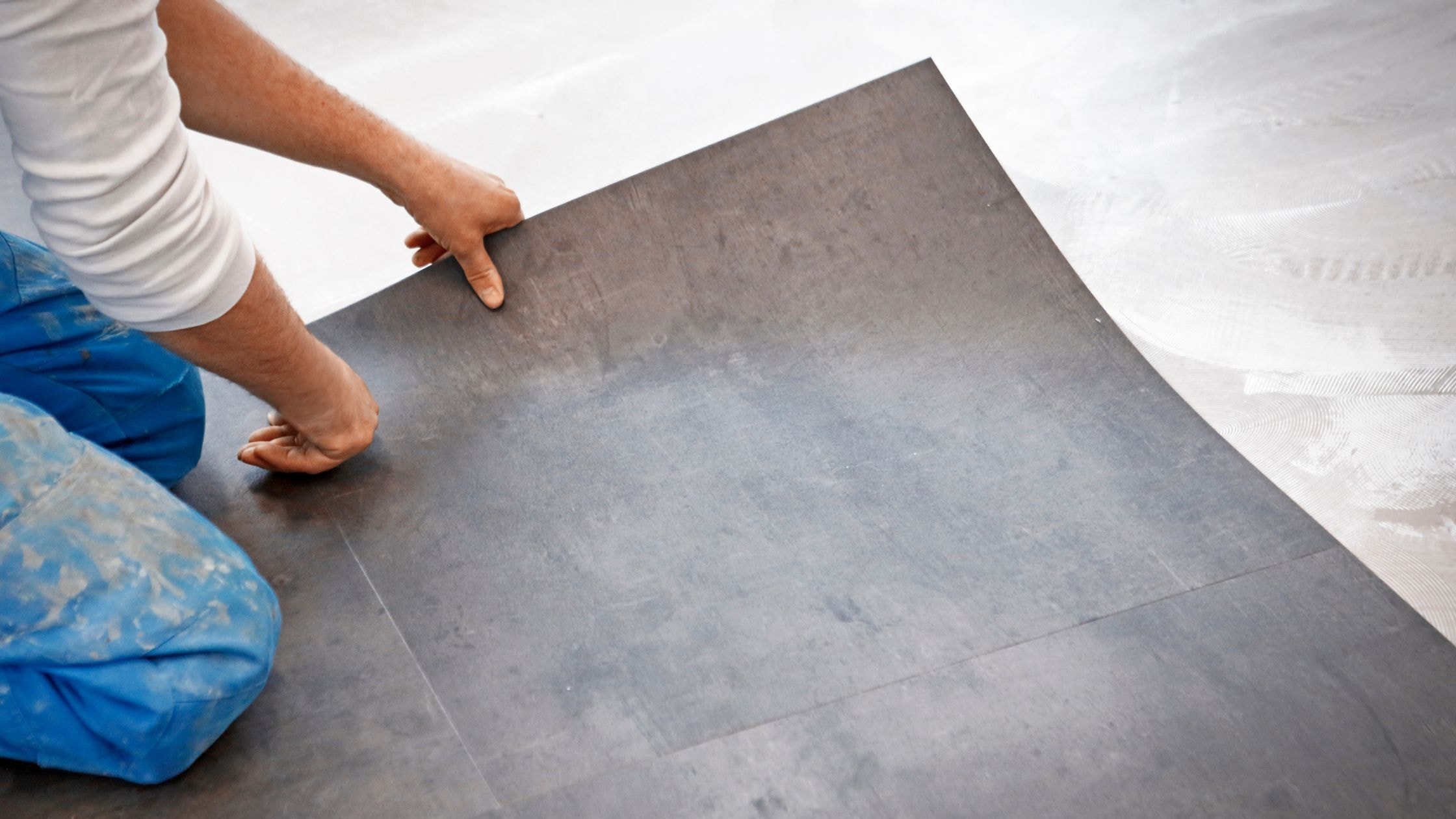
How Laminate Flooring Works
Laminate flooring consists of several layers bonded together through high-pressure manufacturing. The base layer provides stability and moisture resistance from below. Above that sits a fiberboard core, typically made from wood byproducts compressed into a dense, rigid panel. The image layer creates the visual appearance, using high-resolution photography to replicate natural wood, stone, or tile patterns. Finally, the wear layer protects against scratches, stains, and fading.
This multilayer construction makes laminate highly durable for high-traffic areas. The fiberboard core gives laminate its characteristic solid feel underfoot. Unlike hardwood, laminate resists scratches and maintains its appearance for years with minimal maintenance. The protective layer determines quality levels, with thicker wear layers providing better scratch resistance and longevity.
Quick tip: Check the AC rating on laminate products—AC3 suits residential spaces while AC4 and AC5 handle commercial applications and heavy furniture without damage.
Vinyl Flooring Composition
Vinyl flooring uses synthetic materials throughout its construction. The backing layer anchors the product and provides stability. Above that, manufacturers add printed layers that create the design, followed by a clear wear layer that protects against damage. Sheet vinyl comes in large rolls, while luxury vinyl plank and luxury vinyl tiles arrive in individual pieces.
Luxury vinyl flooring includes additional layers for enhanced performance. Some products feature a rigid core made from stone-plastic composite or wood-plastic composite materials. This construction method creates exceptional stability and allows installation over uneven existing floors. The top layer varies in thickness, with commercial-grade options offering superior protection.
Vinyl plank flooring has revolutionized the market by combining easy installation with realistic wood appearance. These planks click together without adhesive, creating a floating floor similar to laminate. Sheet vinyl flooring requires professional installation in most cases, as proper fitting and seaming demand experience and specialized tools.
Laminate vs Vinyl: Water Resistance Comparison
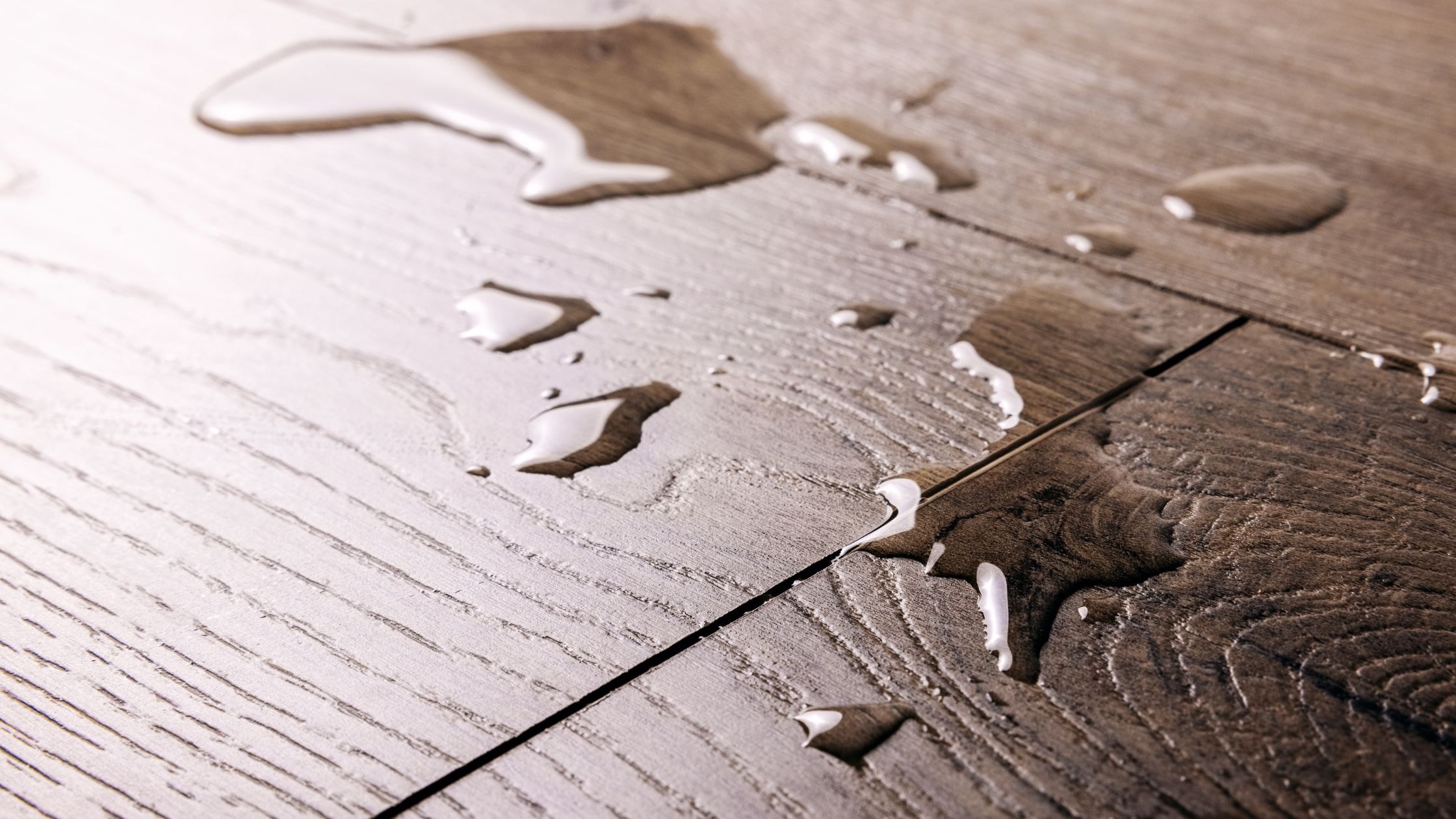
Water separates these two flooring types more than any other factor. Laminate flooring contains wood byproducts in its core, making it vulnerable to moisture damage. Water that seeps through seams can cause the fiberboard core to swell, creating permanent damage. While some laminate products include water-resistant coatings, they cannot match vinyl’s inherent moisture tolerance.
Vinyl flooring excels in moisture-prone areas because its synthetic materials repel water completely. Bathrooms, kitchens, and laundry rooms benefit from vinyl’s waterproof construction. Spills sit on the surface without penetrating, allowing easy cleanup. This water resistance makes vinyl the clear choice for basements and other high-moisture areas.
Did you know? Modern luxury vinyl plank includes waterproof cores that prevent moisture from reaching subfloors, protecting your home’s structure even during flooding events.
Both laminate and vinyl handle normal temperature fluctuations without problems. However, extreme temperature changes or high humidity can affect laminate more severely. Vinyl maintains its dimensions and appearance across wider environmental ranges.
Comparing Installation Methods
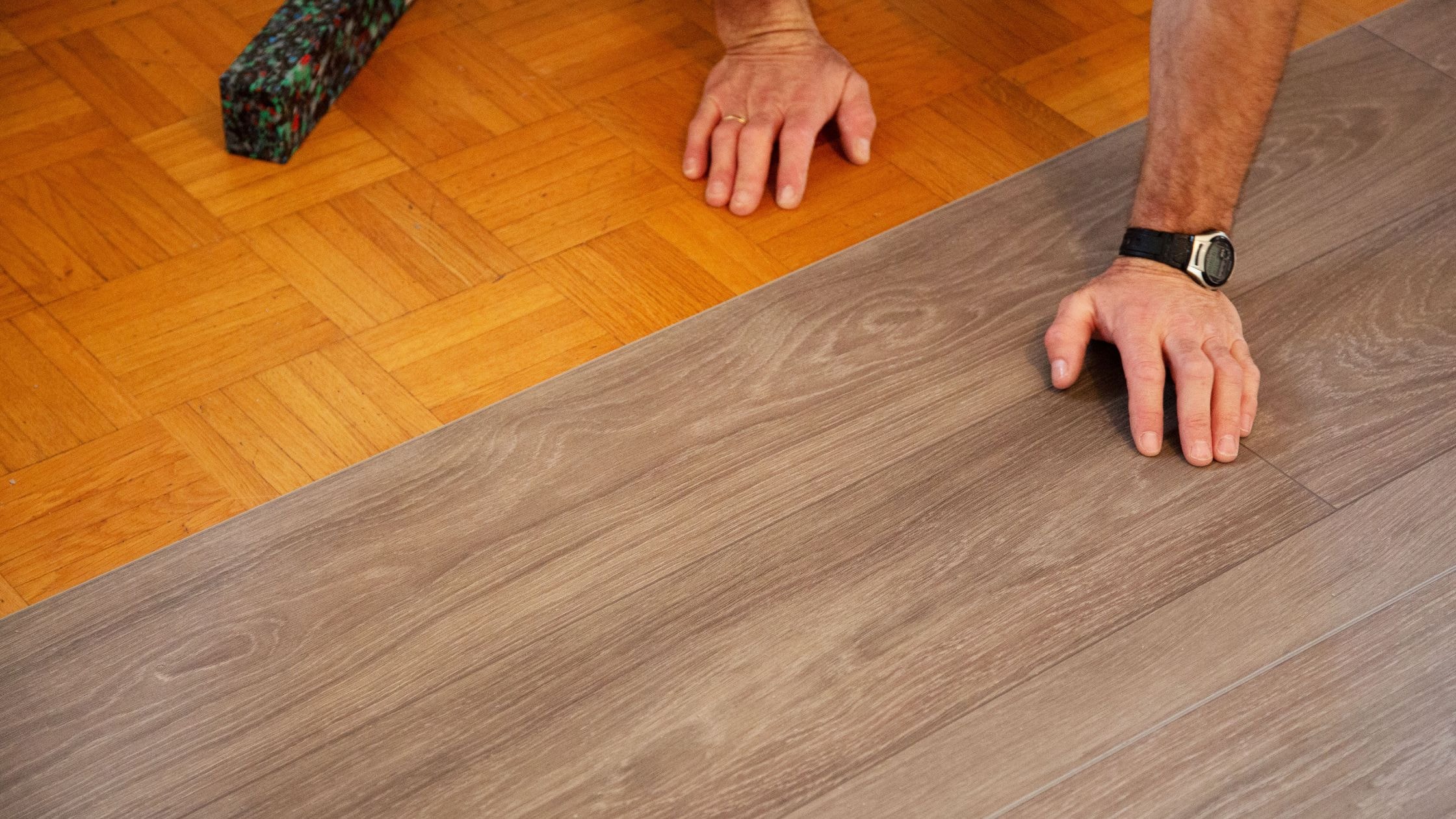
Floating Floor Systems
Both laminate and vinyl often install as floating floors, meaning they rest on the subfloor without adhesive or nails. This installation method simplifies the process and reduces costs. The planks or tiles connect through click-lock systems that require fewer tools than traditional methods.
Laminate flooring installation typically proceeds faster because the rigid panels connect easily and maintain their shape during installation. The material cuts cleanly with standard saws, and homeowners with basic DIY skills can complete installations successfully. Most laminate requires underlayment beneath for sound dampening and minor subfloor irregularities.
Luxury vinyl plank installation follows similar principles but offers more flexibility. The material bends slightly, conforming to minor subfloor imperfections better than rigid laminate. Some vinyl products include attached underlayment, eliminating that installation step. However, flexible vinyl can shift during cutting, requiring steady hands and patience.
Professional Installation Considerations
Sheet vinyl flooring demands professional installation for best results. The large rolls require precise measuring, cutting, and seaming. Mistakes during installation create visible flaws that compromise both appearance and performance. Professional installers bring experience and specialized equipment that ensure proper fit and longevity.
Complex room layouts increase installation difficulty for both materials. Multiple corners, doorways, and transitions challenge DIY installers. Professional installation costs typically range per square foot installed, with vinyl slightly cheaper than laminate in most markets. However, simple rectangular rooms allow confident homeowners to tackle either material successfully.
Quick tip: Acclimate flooring materials in the installation room for 48 hours before beginning work to prevent expansion or contraction after installation.
Durability and Maintenance Requirements
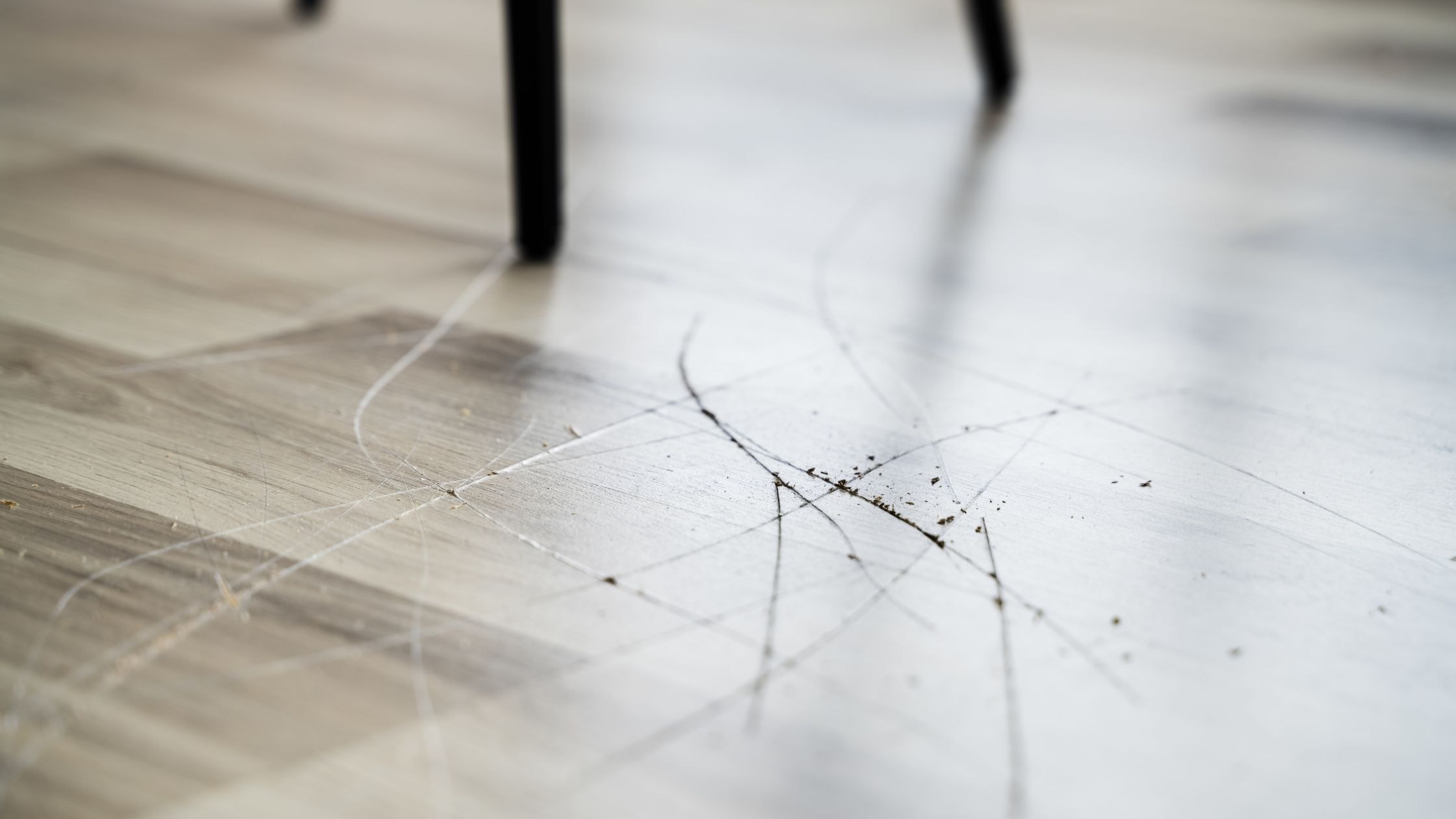
Scratch Resistance and Wear Performance
The wear layer determines how well both flooring types resist daily damage. Laminate flooring typically offers excellent scratch resistance thanks to its hard melamine coating. Heavy furniture, pet claws, and dropped objects rarely penetrate quality laminate. The material maintains its appearance for decades in residential settings.
Vinyl flooring varies more widely in scratch resistance. Budget vinyl products show wear faster than premium options. However, luxury vinyl flooring with thick wear layers matches or exceeds laminate durability. The slight flexibility in vinyl can actually prevent some damage that would crack rigid materials.
Both materials resist stains better than natural wood. Spills wipe away without penetrating the surface. Stain-resistant properties make both laminate and vinyl practical for homes with children and pets. However, harsh chemicals can damage protective layers on both products, so gentle cleaning products work best.
Cleaning and Long-Term Care
Low-maintenance characteristics attract homeowners to both options. Regular sweeping or vacuuming removes dirt and debris that could scratch the surface. Damp mopping with appropriate cleaners maintains appearance without damaging protective layers. Unlike hardwood flooring, neither requires periodic refinishing or special treatments.
Laminate flooring should never be wet mopped with excessive water. The moisture can seep into seams and damage the fiberboard core. Slightly damp cleaning with immediate drying protects the material. Many manufacturers recommend specific cleaning products formulated for laminate.
Vinyl tolerates more moisture during cleaning. The material can be wet mopped without concern, making it easier to maintain in busy households. However, standing water should still be avoided around seams. Both materials benefit from protective pads under heavy furniture to prevent indentations and damage.
Style Options and Aesthetic Appeal
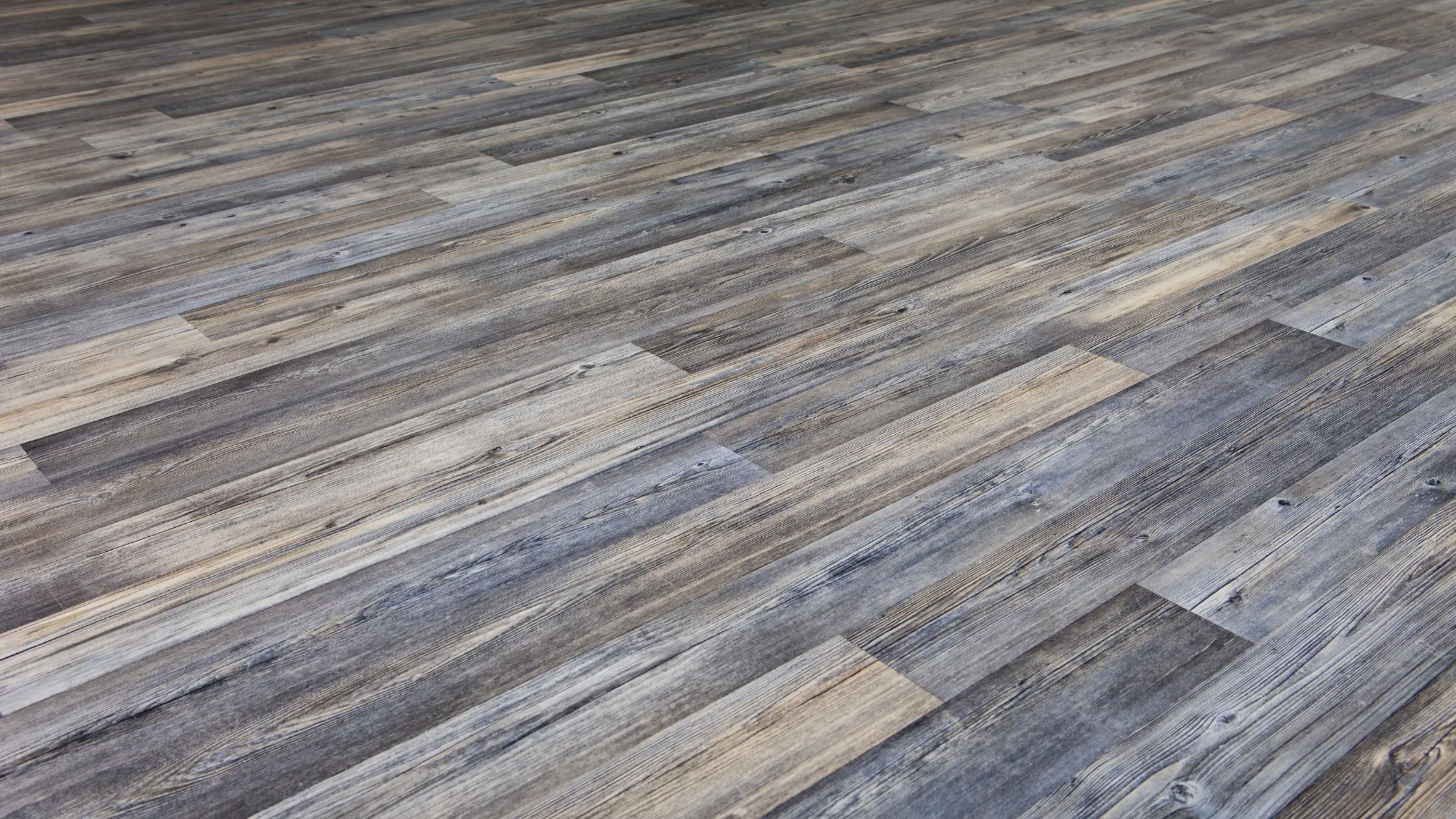
Modern manufacturing creates convincing replicas of natural materials in both laminate and vinyl. High-resolution imaging and embossing techniques add texture that mimics natural wood grain, stone patterns, and tile surfaces. The visual differences between quality laminate and vinyl have become nearly imperceptible.
Laminate flooring offers a wider range of textures and finishes. The rigid construction allows deeper embossing that creates more pronounced grain patterns. Some premium laminate products feature hand-scraped appearances and varied plank widths that closely resemble solid hardwood.
Vinyl flooring excels in creating different styles beyond wood looks. The material easily replicates stone, ceramic, and concrete appearances. Luxury vinyl tiles create custom patterns and designs impossible with rigid planks. The flexibility allows curved cuts and creative installations.
Both materials come in various plank widths and lengths. Wide planks create contemporary aesthetics, while narrow strips evoke traditional hardwood styling. Color ranges span from light natural tones to dark exotic species. Both laminate and vinyl update regularly with trending colors and patterns.
Cost Analysis: Square Foot Pricing
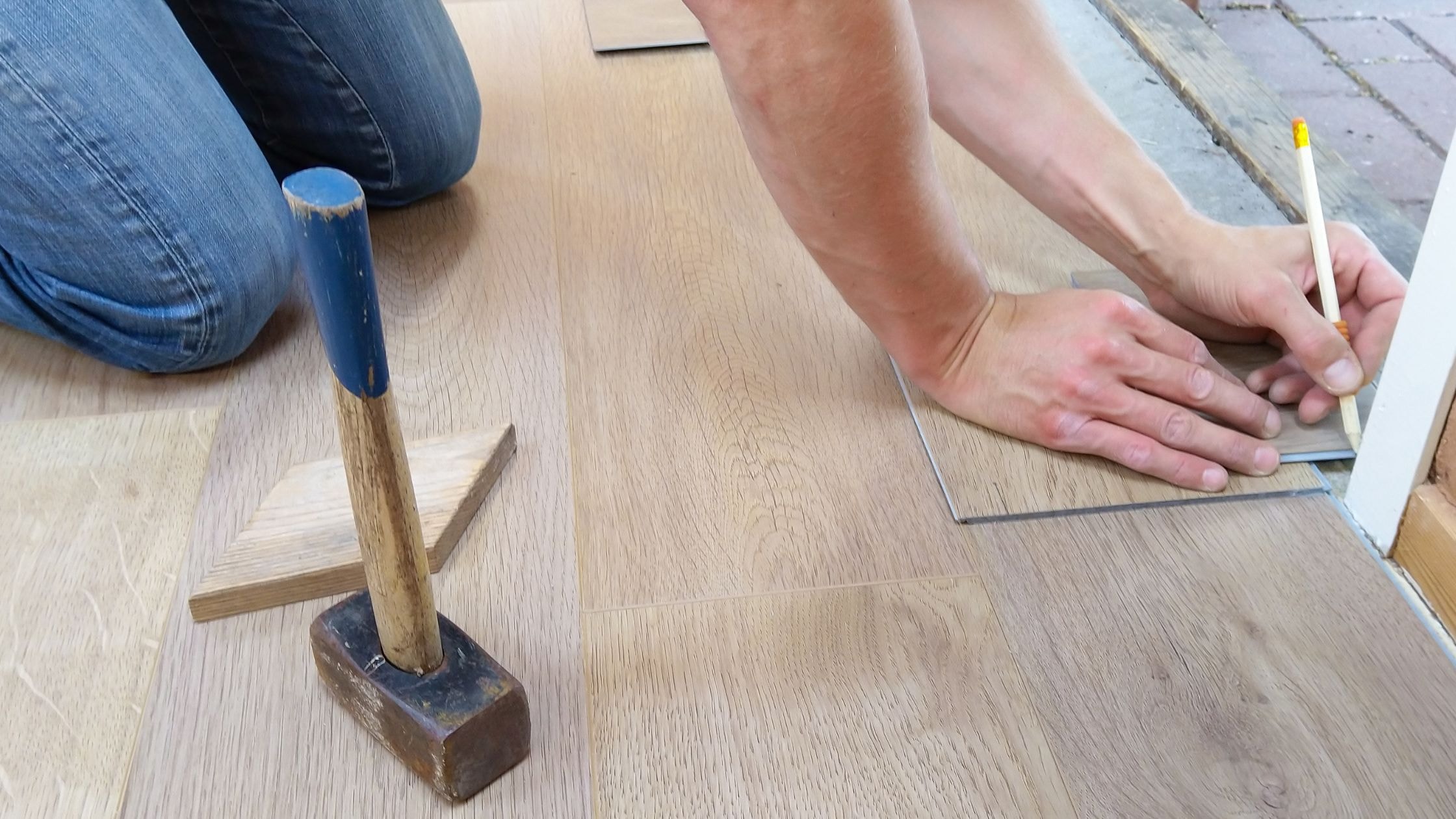
Budget considerations influence most flooring decisions. Both laminate and vinyl flooring cost less per square foot than solid hardwood flooring. Entry-level products start at similar price points, though quality varies significantly within each category.
Mid-range laminate flooring typically costs slightly less than comparable vinyl products. However, premium luxury vinyl plank often exceeds laminate flooring pricing. The total square foot installed cost includes materials, underlayment, and labor. DIY installation saves money on both materials, though professional installation guarantees proper performance.
Long-term value extends beyond initial purchase price. Both materials last 15-25 years with proper care. Replacement costs remain reasonable compared to expensive materials like natural hardwood. Neither requires costly refinishing, reducing lifetime ownership expenses.
Did you know? Choosing thicker wear layers adds upfront cost but extends flooring lifespan significantly, potentially saving money over the product’s lifetime.
Environmental Impact and Health Considerations
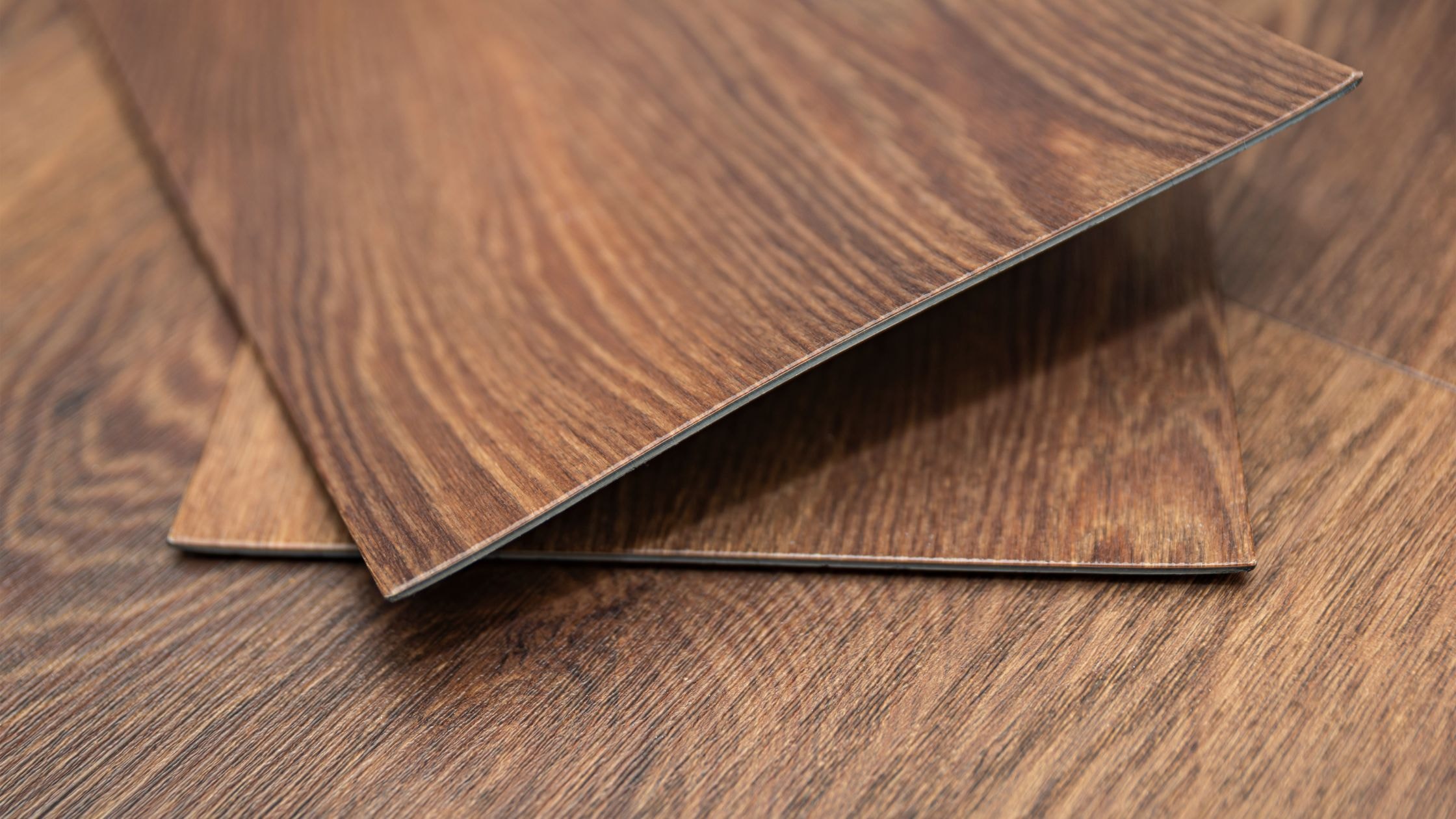
Environmentally conscious homeowners examine flooring materials carefully. Laminate flooring uses wood byproducts that might otherwise become waste, giving the material an environmental advantage. However, manufacturing processes and adhesives can release volatile organic compounds.
Vinyl flooring relies entirely on synthetic materials derived from petroleum products. Manufacturing creates environmental concerns, though modern processes have improved significantly. Some vinyl products release volatile organic compounds, particularly during initial installation.
Both industries have developed low-emission products that meet strict environmental standards. FloorScore certification and other third-party testing verify low emissions. Homeowners concerned about indoor air quality should seek certified products regardless of material choice.
Recyclability differs between materials. Laminate flooring contains multiple bonded layers that complicate recycling. Vinyl presents similar challenges, though some manufacturers have developed recycling programs. Neither material offers the environmental benefits of natural wood that can decompose naturally.
Durability contributes positively to environmental impact for both materials. Long-lasting floors reduce replacement frequency, lowering overall resource consumption. Both laminate and vinyl prevent harvesting additional natural materials like hardwood during their service life.
For more information about comparing flooring options, check out this guide on Vinyl vs. Hardwood Flooring: Which Is Best for Your Home?
Installation Complexity and DIY Potential
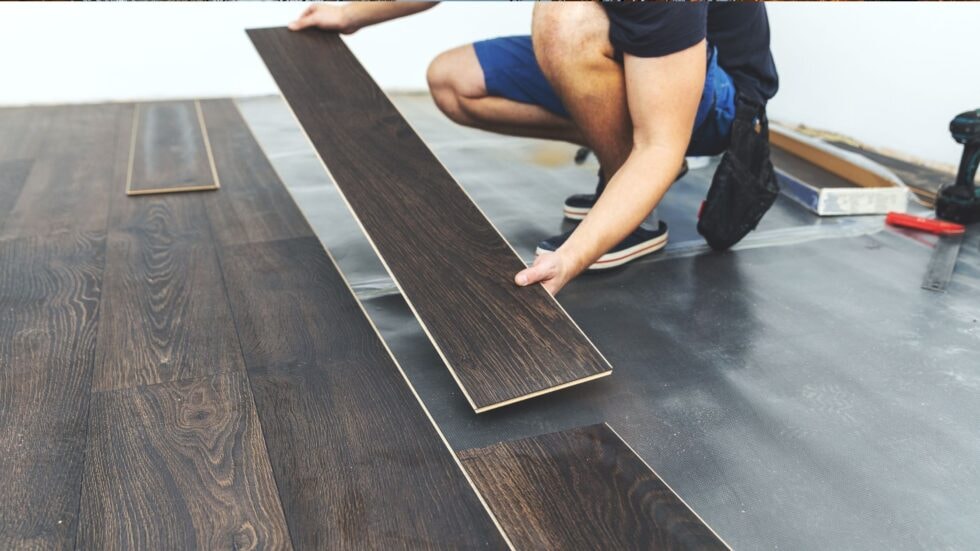
Installation difficulty affects total project costs and timelines. Both laminate and vinyl offer DIY-friendly options, though success requires careful planning and proper tools.
Laminate flooring installation typically requires basic carpentry skills. The rigid planks cut cleanly with circular saws or specialized laminate cutters. The click-lock systems engage firmly, creating stable connections. Underlayment installation adds a step but proceeds quickly. Most homeowners complete installations in a weekend with proper preparation.
Vinyl plank flooring installation follows similar processes but requires different techniques. The flexible material demands sharp utility knives and steady cutting. Some installers prefer scoring tools designed specifically for vinyl. The material’s flexibility helps it conform to irregular subfloors, potentially reducing preparation work.
Both materials require careful subfloor preparation. Uneven surfaces create problems regardless of material choice. Grinding high spots and filling low areas ensures proper installation and prevents future problems. This preparation often determines installation success more than the flooring material itself.
For comprehensive guidance on preparing for new floors, explore The Ultimate Guide to Flooring Installation for Homeowners.
Transitions between rooms and different flooring types require attention in both materials. Transition strips cover expansion gaps and create finished appearances. Both laminate and vinyl need expansion space around room perimeters to accommodate natural expansion and contraction.
The Consumer Reports website offers detailed flooring comparisons that help homeowners understand testing methods and performance ratings across different brands and materials.
Making the Final Decision
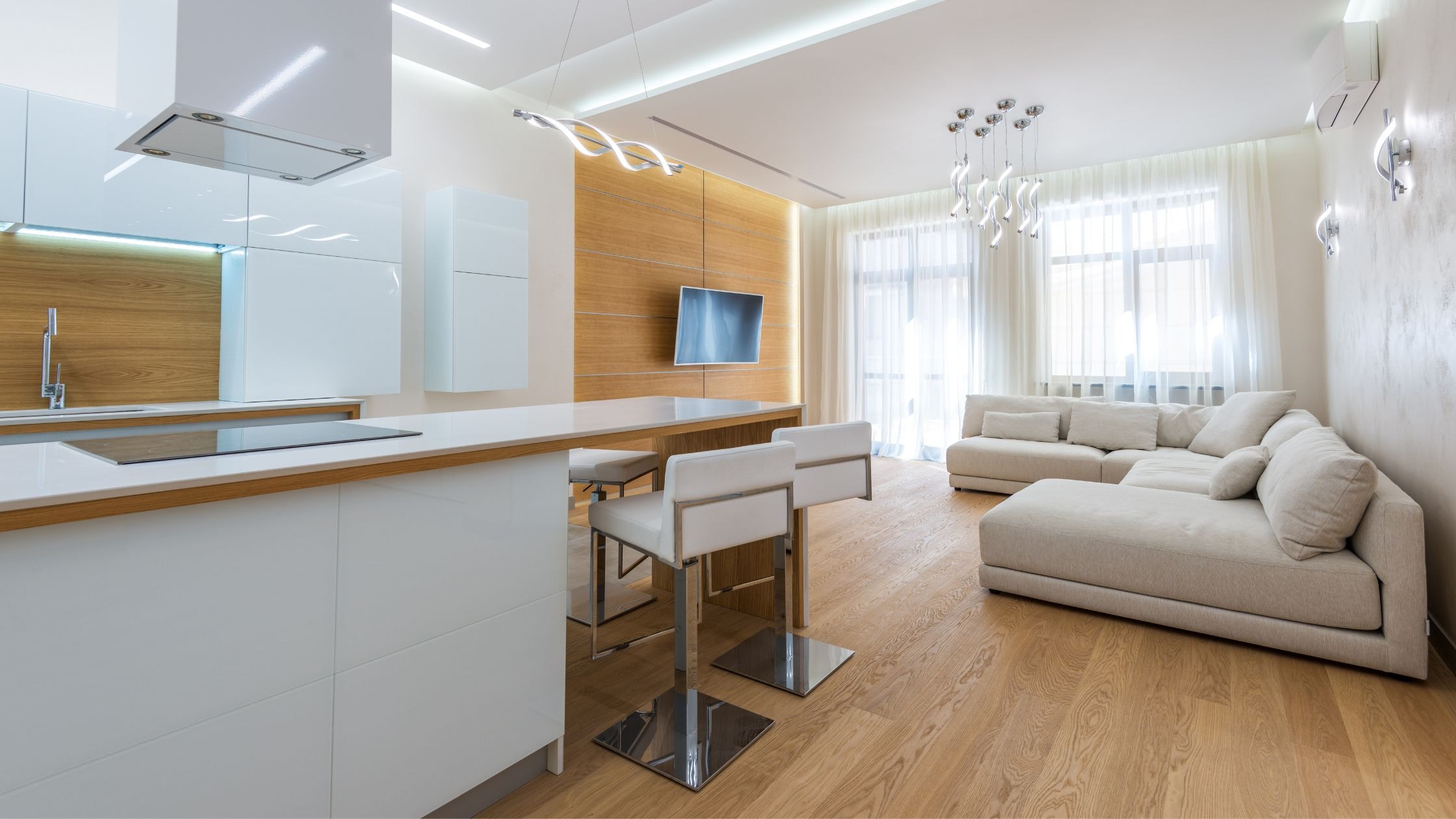
Selecting between vinyl or laminate flooring depends on specific circumstances rather than one material being universally superior. Room location, moisture exposure, budget, and personal preferences all influence the optimal choice.
Vinyl floors offer a slight edge in moisture-prone areas and provide softer underfoot comfort. The material suits bathrooms, basements, kitchens, and laundry rooms perfectly. Homeowners who prioritize water resistance should choose vinyl without hesitation.
Laminate flooring holds a slight advantage in achieving authentic wood appearance and feel. The rigid construction creates a solid walking surface that some prefer. The material works beautifully in bedrooms, living rooms, dining areas, and offices.
Both laminate and vinyl deliver excellent value compared to traditional hardwood. They resist damage better than natural materials while requiring less maintenance. Modern manufacturing has elevated both options to legitimate alternatives rather than budget compromises.
Budget constraints rarely determine the choice anymore, as similarly priced products exist in both categories. Instead, homeowners should prioritize performance characteristics that match their specific needs. Families with pets might favor vinyl’s superior water resistance, while those seeking authentic wood appearance might prefer laminate.
Installation capability affects material selection for DIY enthusiasts. Both materials support self-installation, though laminate typically proceeds more smoothly for beginners. Homeowners uncomfortable with DIY projects find both materials cost-effective even with professional installation included.
Frequently Asked Questions
Which lasts longer: laminate vs vinyl flooring?
Both materials last 15-25 years with proper maintenance. Luxury vinyl plank in low-traffic areas can exceed 25 years. Laminate flooring in high-traffic commercial spaces shows wear faster than residential applications. The wear layer thickness determines longevity more than the base material choice.
Can you install laminate or vinyl flooring over existing floors?
Both materials install over most existing floors if the surface remains level and stable. Old vinyl, tile, and concrete subfloors work well. Remove carpet and padding before installation. Severely damaged or uneven existing floors require removal or leveling before installing new flooring.
Does laminate and vinyl flooring work with radiant heat systems?
Both materials function with radiant heat when manufacturers specify compatibility. Laminate flooring conducts heat efficiently due to its dense core. Vinyl requires checking maximum temperature ratings to prevent damage. Always verify compatibility before installation over heated floors.
Which provides better resale value for homes?
Luxury vinyl flooring currently provides slight advantages in resale value due to superior moisture resistance and modern appeal. However, quality installations of either material maintain strong resale value. Neutral colors and current styles matter more than material choice in most markets.
How do laminate vs vinyl compare for environmental impact?
Laminate flooring uses wood byproducts, reducing waste from timber industries. Vinyl relies on synthetic materials that require petroleum-based production. Both can release volatile organic compounds, though low-emission certified products minimize health concerns. Neither material offers ideal environmental profiles compared to natural wood.
Which flooring types handle heavy furniture better?
Both materials support heavy furniture with proper protective pads. Laminate’s rigid construction resists indentation slightly better than flexible vinyl. However, luxury vinyl with rigid cores matches laminate performance. Furniture pads prevent damage to both materials.
Can you use dry methods to clean both flooring types?
Dry methods work perfectly for both laminate flooring and vinyl. Regular sweeping and vacuuming maintain appearance without risking moisture damage. Damp mopping suits both materials when properly executed, though laminate requires more caution with water exposure.
Which offers stain resistance: laminate or vinyl flooring?
Both materials provide excellent stain resistance through protective top layers. Spills wipe away easily without penetrating surfaces. Vinyl tolerates standing liquids longer without damage. Both resist common household stains better than natural wood flooring.
Conclusion
The laminate vs vinyl decision ultimately depends on individual circumstances rather than one material being universally superior. Vinyl dominates moisture-prone applications with its waterproof construction and easy maintenance. Laminate flooring excels in dry areas where authentic wood appearance and solid feel matter most.
Both laminate and vinyl flooring deliver impressive durability, style options, and value. Modern manufacturing has eliminated many historical weaknesses, creating capable products in both categories. Homeowners can confidently select either material by matching performance characteristics to room requirements.
Success with either material requires proper installation, appropriate product selection, and reasonable maintenance. Both vinyl or laminate flooring transform homes affordably while providing years of reliable service. The best choice aligns with specific needs, budget constraints, and aesthetic preferences rather than following universal recommendations.

